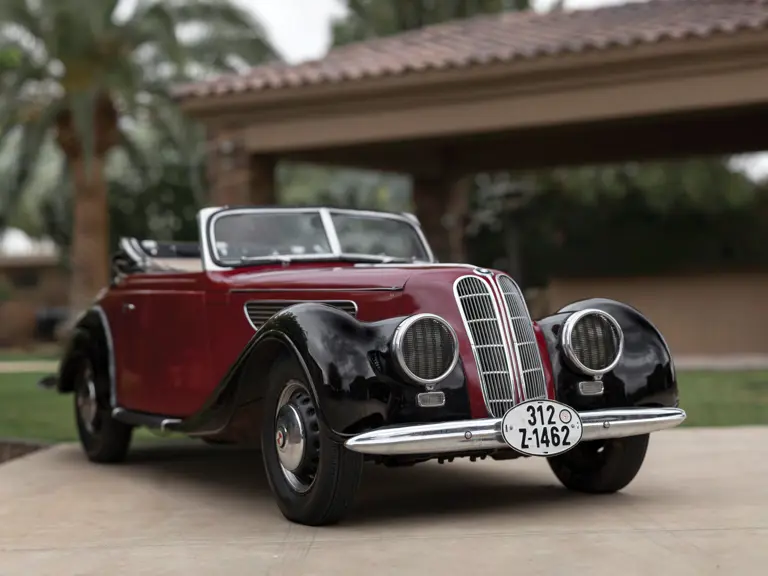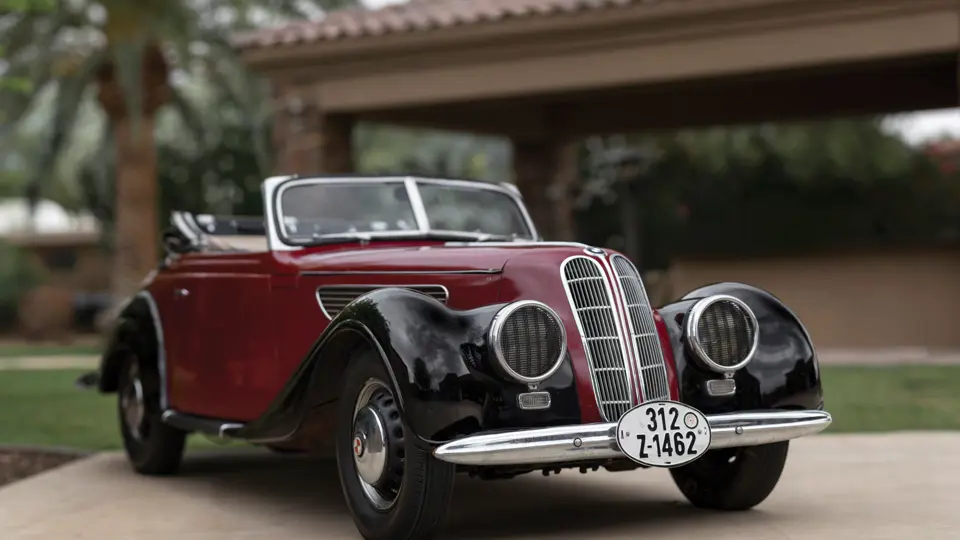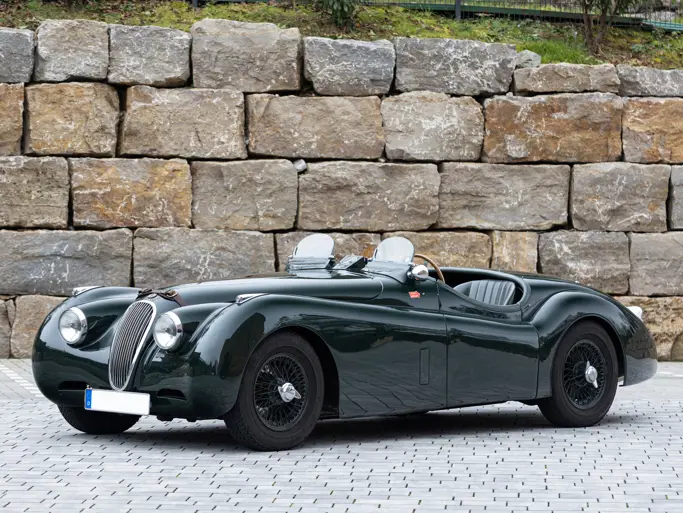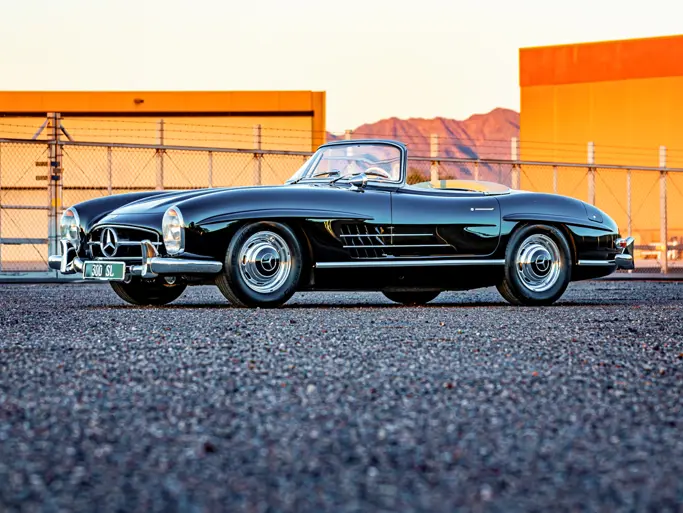 | Santa Monica, California
| Santa Monica, California
Germany’s BMW was originally an aero-engine manufacturer and fully one decade old before entering automobile production with its acquisition of Dixi Werke of Eisenach, Germany in 1928. There, Dixi continued to manufacture a license-built version of the Austin Seven. The BMW badge was adopted for these cars in January 1929.
Growth was rapid. By 1934, BMW was building the Type 315, a 1,490-cc car available in 40-hp, triple-carburetor tune. The 1936 Berlin Auto Show heralded the 326, BMW’s first four-door sedan, powered by a 1,971-cc, 50-hp engine and capable of 72-mph. More streamlined than earlier BMWs, the 326 begat several variations: the 320, a cheaper four-cylinder car, and the short-chassis, six-cylinder 327, available as either a two-seat coupe or cabriolet. From 1938, an uprated engine was available in the 327, with the resulting car designated somewhat ambiguously “327/28.” Production, which continued through 1940, comprised 482 Sport Cabriolets, 86 Sport Coupes and a single bare chassis.
The popularity didn’t end there. At the end of World War II, BMW’s Munich factory was in ruins, and its Eisenach plant was in the Eastern Zone of partitioned Germany. Postwar, BMW automobile production did not resume at Munich until 1952, when a dispute arose with the former Dixi Werke facility at Eisenach, which had resumed production of BMW’s prewar designs in Soviet-occupied East Germany. A settlement was reached, and thereafter, Eisenach’s products were badged “EMW,” short for Eisenacher Motorenwerk. It is thought that this car was built in 1953 at Eisenach, among the famed 328, the popular 327 and 327/28 Cabriolets and Coupes. It is one of 505 BMW (and later renamed EMW) 327/2 Cabriolets built in the period 1949 to 1955 at Eisenach. Production of the 327 resumed in 1948 and continued into 1956, while in Britain, the 1,971 cubic centimeter engine was produced by Bristol and used in the new 400 Series.
This red over black two-tone example was featured in the March 1987 Car Collector and Classic Cars magazine in an article by its prior owner. This was titled “The Car That Came in From the Cold” and it details the cars’ journey. The BMW/EMW has a black interior and black convertible top and is presented as an older restoration. It is believed that this represents the 327/2 based on the hood being hinged at the cowl to open in the traditional manner, plus the fact that the door hinges are along the front door edge instead of the rear-hinged “suicide” design. There is a blend of BMW and EMW badging in which it is stated that the EMW markings “look to be original” while it is thought that the BMW motifs may have been later additions. The car is powered by a 2.0-liter inline six-cylinder Bristol 400 tri-carb engine; this is reported as the same prewar designed engine that went onto the 328 and was given to AC as part of war reparations. It was also utilized in the AC Bristol. This unit is paired with a floor-shift four-speed manual transmission.
The front seating is individual and the back has a small tunnel between the seats which makes it a comfortable four-passenger vehicle. Among the other features on this very uncommon German machine are tilt-out windshield sections, a clock, artillery-type wheels and the rear body section houses the spare that is partially recessed with a metal cover that adds styling detail and convenience should the spare be needed. Benefiting from BMW’s rich and fascinating legacy, this dashing 327/2 awaits an enthusiastic new owner.





